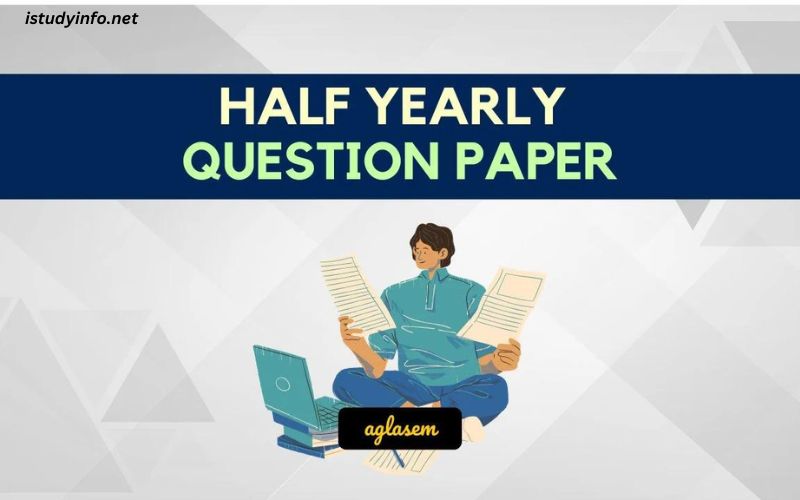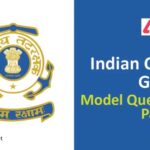Structure of the Question Paper
The Half Yearly Question Paper for Class 8 Maths in 2019 was designed to evaluate a wide range of mathematical skills. The paper typically follows a structured format, divided into different sections to cover various types of questions. These sections usually include:
- Multiple Choice Questions (MCQs): These questions assess the basic understanding of mathematical concepts. Each question is followed by four options, and the student must select the correct one.
- Short Answer Questions (SAQs): These require concise responses and are designed to test the student’s ability to solve problems quickly and accurately.
- Long Answer Questions (LAQs): These questions demand detailed solutions and are aimed at evaluating the student’s comprehension and application of mathematical principles in more complex scenarios.
- Very Long Answer Questions (VLAQs): These are extensive questions that test a student’s depth of understanding and their ability to integrate and apply multiple concepts to solve problems.
Key Topics Covered
The Class 8 Maths syllabus encompasses a variety of topics, each essential for building a robust mathematical foundation. The Half Yearly Question Paper of 2019 included questions from the following key areas:
1. Rational Numbers
- Understanding Rational Numbers: Questions on the definition, properties, and operations involving rational numbers.
- Representation on Number Line: Problems requiring the plotting of rational numbers on a number line.
- Comparison and Ordering: Tasks involving the comparison and ordering of rational numbers.
2. Linear Equations in One Variable
- Solving Linear Equations: Simple and complex equations requiring students to find the value of the variable.
- Word Problems: Application-based questions where students must formulate and solve linear equations from real-life situations.
3. Understanding Quadrilaterals
- Properties of Quadrilaterals: Questions about the properties of different types of quadrilaterals, such as parallelograms, rhombuses, and rectangles.
- Angle Sum Property: Problems involving the calculation of angles in quadrilaterals.
4. Practical Geometry
- Construction of Quadrilaterals: Questions requiring students to construct quadrilaterals using given measurements.
- Properties Verification: Tasks where students must verify the properties of the constructed quadrilaterals.
5. Data Handling
- Representation of Data: Questions involving bar graphs, pie charts, and histograms.
- Probability: Basic probability problems, including theoretical and experimental probability.
6. Squares and Square Roots
- Calculations: Problems requiring the calculation of squares and square roots.
- Applications: Application-based questions involving the use of squares and square roots in real-life scenarios.
7. Cubes and Cube Roots
- Calculations: Tasks involving the calculation of cubes and cube roots.
- Applications: Problems requiring the use of cubes and cube roots in practical situations.
8. Comparing Quantities
- Ratio and Proportion: Problems involving the calculation and application of ratios and proportions.
- Percentage: Questions on the calculation of percentages and their applications in various contexts.
- Profit and Loss: Application-based questions involving profit and loss calculations.
Detailed Analysis of Sample Questions
To provide a more concrete understanding, let’s delve into some sample questions from the 2019 Half Yearly Question Paper and analyze their purpose and the skills they aim to test.
Multiple Choice Question
Example: If the product of two rational numbers is 1, and one of the numbers is 2/3, what is the other number?
- (a) 2/3
- (b) 3/2
- (c) -2/3
- (d) -3/2
Analysis: This question tests the student’s understanding of the multiplicative inverse property of rational numbers. The correct answer is (b) 3/2, as the product of 2/3 and 3/2 is 1.
Short Answer Question
Example: Solve the linear equation: 3x – 7 = 2.
Solution: Adding 7 to both sides, we get 3x = 9. Dividing both sides by 3, we get x = 3.
Analysis: This question assesses the student’s ability to manipulate and solve linear equations, a fundamental algebraic skill.
Long Answer Question
Example: Construct a quadrilateral ABCD where AB = 5 cm, BC = 6 cm, CD = 4 cm, DA = 7 cm, and AC = 8 cm. Measure angle A.
Solution: Class 8 Maths Half Yearly Question Paper 2019 The student needs to use a ruler and compass to construct the quadrilateral accurately and then measure the required angle.
Analysis: This question tests practical geometry skills, including the ability to accurately construct geometric shapes and measure angles.
Very Long Answer Question
Example: A shopkeeper sells a pair of shoes at a 20% profit. If the cost price is $50, find the selling price. Also, if the customer bought the shoes with a 10% discount on the selling price, what is the final amount paid?
Solution:
- Selling price without discount = Cost price + Profit = $50 + 20% of $50 = $50 + $10 = $60.
- Final amount paid with 10% discount = Selling price – Discount = $60 – 10% of $60 = $60 – $6 = $54.
Analysis: This problem integrates multiple concepts such as percentage, profit and loss, and discounts, testing the student’s ability to apply these concepts in practical situations.
Significance of the Half Yearly Examination
The Half Yearly Examination holds significant value in the academic calendar for several reasons:
- Assessment of Understanding: It provides a clear picture of the student’s grasp of the topics covered in the first half of the academic year.
- Identification of Weak Areas: By analyzing performance, teachers and students can identify areas that need more focus and improvement.
- Preparation for Final Exams: The format and difficulty of the half yearly exams help students prepare for the final examinations by providing a benchmark for their readiness.
- Encouragement of Consistent Study Habits: Regular exams encourage students to maintain consistent study habits and not leave learning until the last minute.
Conclusion
The Class 8 Maths Half Yearly Question Paper of 2019 is an essential assessment tool that plays a crucial role in the educational journey of a student. Through its structured format and diverse range of questions, it evaluates the students’ understanding and application of fundamental mathematical concepts. For educators, it provides valuable insights into student performance and areas that need attention. For students, it serves as a critical milestone in their academic progress, helping them to gauge their strengths and areas for improvement. As such, preparing thoroughly for such exams is vital, not just for achieving good grades but for building a solid foundation in mathematics that will benefit students in higher classes and beyond.













